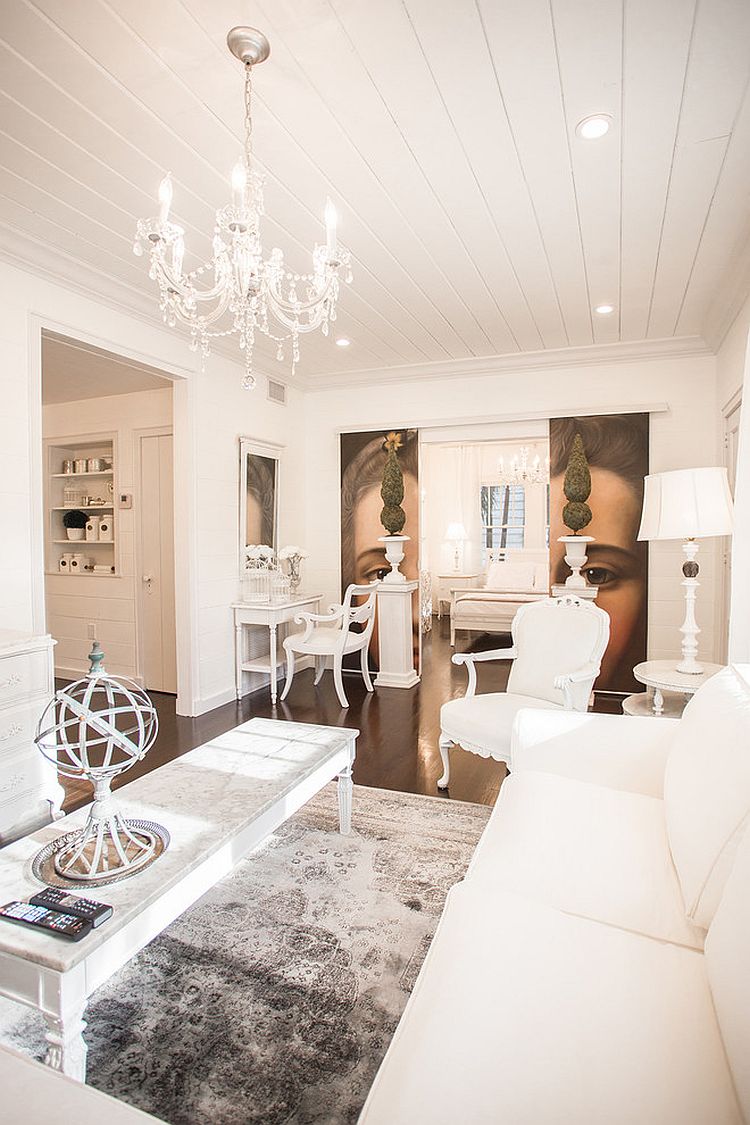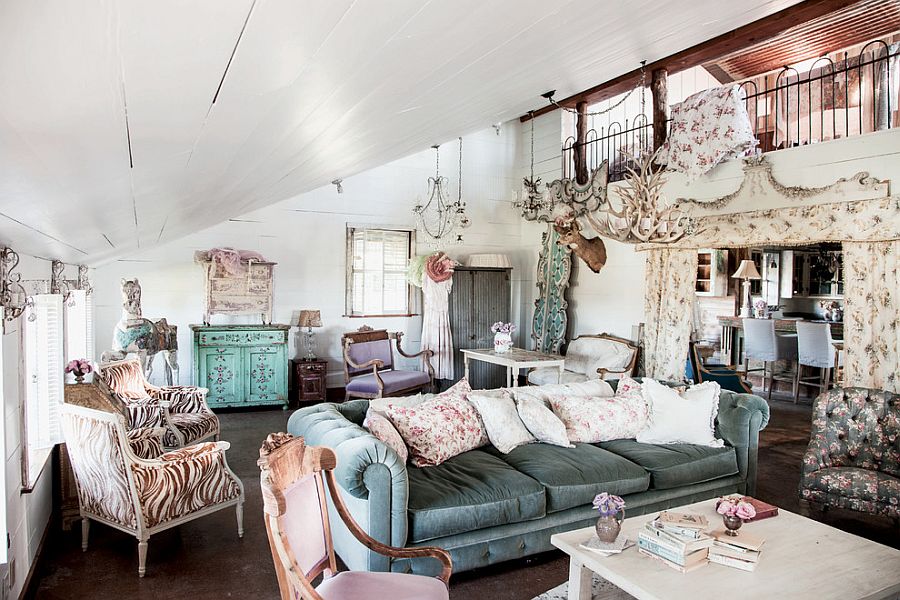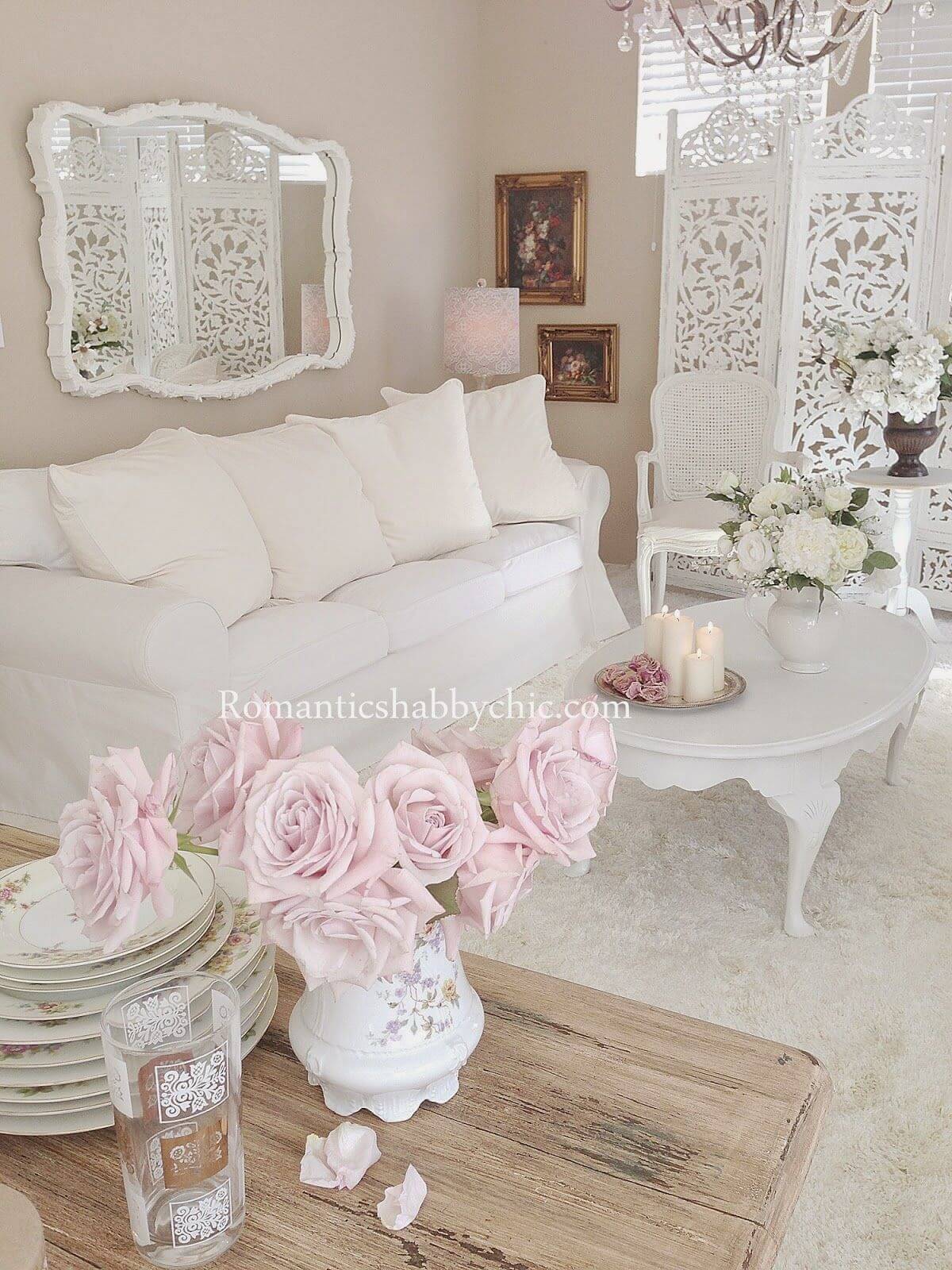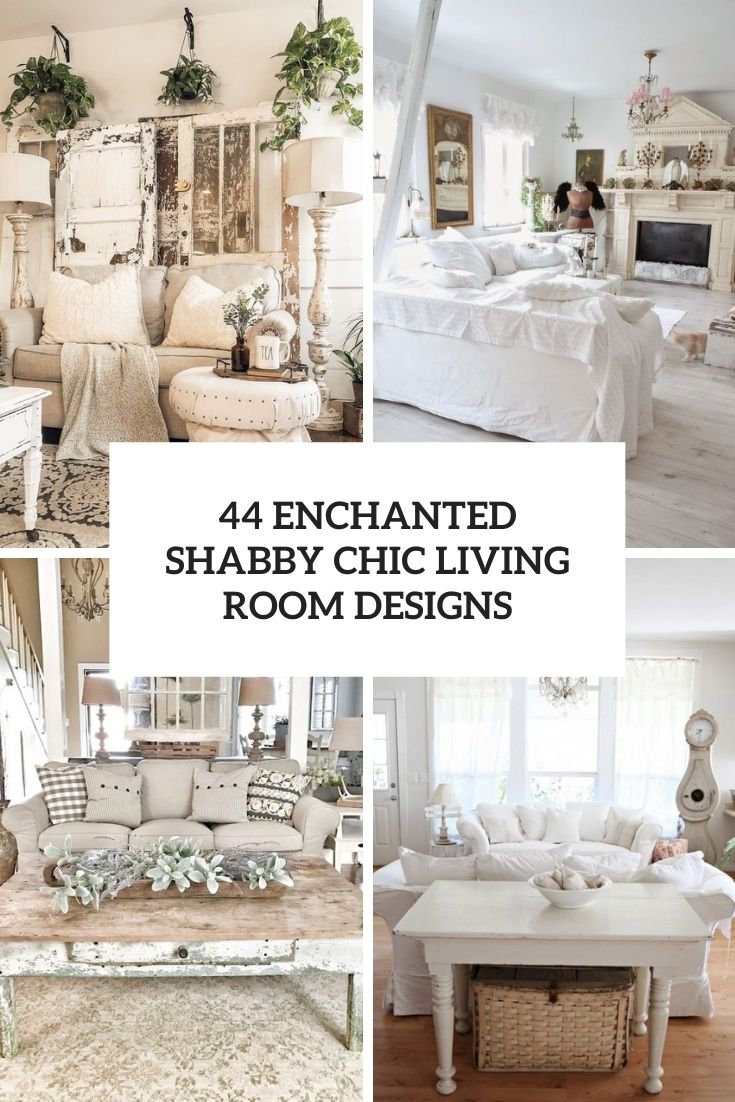Shabby Chic Living Room: Charm Overload!
Shabby Chic Living Room: Charm Overload!
The shabby chic aesthetic, a delightful blend of rustic charm and refined elegance, has captivated homeowners for years. It's a style that celebrates imperfection, embracing the beauty of worn surfaces and vintage treasures. When applied to the living room, the heart of the home, shabby chic creates an inviting and uniquely personal space, brimming with character and warmth. This guide will delve into the essential elements of creating a shabby chic living room, offering inspiration and practical advice to transform your space into a haven of understated elegance.
I. Understanding the Shabby Chic Aesthetic
Before we dive into the specifics of decorating, let's clarify the core principles of the shabby chic style. It's more than just distressed furniture; it's a carefully curated look that balances delicate femininity with rustic practicality. Key characteristics include:
-
Distressed Finishes: This is the hallmark of shabby chic. Think faded paint, chipped surfaces, and worn textiles. The goal is not to look broken, but rather to evoke a sense of age and history. The imperfections tell a story, adding depth and character.
-
Pastel Color Palette: Soft, muted tones are central to the shabby chic aesthetic. Think creamy whites, pale pinks, soft blues, and gentle lavenders. These colours create a calming and romantic atmosphere. However, strategic use of bolder accent colours can add visual interest without overpowering the overall palette.
-
Vintage and Antique Furnishings: Incorporating pieces with history is crucial. Look for repurposed furniture, antique finds, or pieces with a vintage feel. These items often possess unique details and craftsmanship that add to the overall charm.
-
Floral Motifs: Delicate floral patterns in fabrics, wallpapers, and artwork are frequently used. These patterns add a touch of femininity and romance, perfectly complementing the rustic elements.
-
Natural Materials: Shabby chic often utilizes natural materials like wood, linen, cotton, and lace. These textures add warmth and authenticity to the space.
-
Layering and Texture: Creating visual interest through layering is key. Combine different textures – think plush velvet, rough linen, and delicate lace – to add depth and complexity to the room.
II. Key Elements of a Shabby Chic Living Room
Now, let's explore the specific elements that will bring your shabby chic living room vision to life:
A. Furniture Selection:
-
Sofas and Armchairs: Opt for sofas and armchairs with slipcovers in soft fabrics like linen or cotton. Choose pastel colours or floral prints. Consider distressed wooden frames or pieces with a slightly worn appearance.
-
Coffee Table: A distressed wooden coffee table, perhaps with a painted finish or a glass top, is a perfect focal point. Look for intricate detailing or unique shapes.
-
Side Tables: Small, antique-style side tables, potentially with drawers, can add charm and functionality. These can be placed next to seating areas for lamps or drinks.
-
Storage Solutions: Incorporate charming storage solutions like antique chests or wicker baskets to keep the space organized while adding to the aesthetic.
B. Colour Palette and Wall Treatments:

-
Wall Colour: Choose a soft, pastel shade for the walls, such as a creamy white, pale grey, or soft blue. These colours provide a neutral backdrop for the other elements in the room.
-
Wallpaper: Consider adding a patterned wallpaper to one wall, featuring delicate floral prints or subtle damask patterns. This adds visual interest without overwhelming the space.
-
Window Treatments: Sheer curtains or roman blinds in pastel colours or delicate floral prints will soften the light and add a touch of romance.
C. Textiles and Accessories:
-
Rugs: A large, patterned rug in muted tones can anchor the seating area and add warmth underfoot. Consider using a rug with a distressed or vintage look.
-
Throws and Cushions: Layer throws and cushions in various textures and colours to add visual interest and comfort. Use soft fabrics like linen, cotton, and velvet in pastel shades and floral prints.
-
Lighting: Choose lighting fixtures that complement the style, such as antique-style lamps with delicate bases, or a chandelier with a distressed finish.
-
Artwork and Decor: Incorporate vintage artwork, framed botanical prints, or antique mirrors. Use decorative items such as porcelain figurines, vintage books, or antique clocks to add character.
D. Creating a Sense of History and Nostalgia:

-
Repurposed Items: Don't be afraid to repurpose old items. An old wooden crate can become a side table, and vintage suitcases can be used as coffee tables.
-
Family Heirlooms: Incorporating family heirlooms adds a unique personal touch and enhances the feeling of history and nostalgia.
-
Vintage Finds: Seek out vintage items at flea markets, antique shops, or online marketplaces to add unique character to your space.

III. Avoiding Common Shabby Chic Mistakes:
While embracing the worn and weathered is key, it's crucial to avoid turning your living room into a cluttered and disorganized mess. Here are a few common pitfalls to avoid:
- Too Much Clutter: Shabby chic is about curated imperfection, not unchecked disorder. Ensure everything has a place and avoid overcrowding the space.

-
Inconsistent Style: While mixing elements is encouraged, ensure they work together harmoniously. Avoid clashing patterns and colours that disrupt the overall aesthetic.
-
Overdoing the Distressed Look: While a touch of wear and tear adds charm, excessive distressing can make the room look neglected rather than stylish.
-
Ignoring Functionality: While aesthetics are important, your living room should remain functional. Ensure that there's sufficient seating and storage for your needs.

- Neglecting Lighting: Proper lighting is crucial to highlighting the textures and details of your shabby chic decor. Avoid harsh overhead lighting and opt for softer, warmer light sources.
IV. Bringing It All Together: A Step-by-Step Guide
- Define Your Style: Before you start, clarify your personal vision of shabby chic. Do you lean towards a more romantic, floral-centric approach, or a more rustic, vintage-inspired one?

-
Choose a Colour Palette: Select your base colours and accent colours, keeping the pastel palette in mind. Create a mood board to visualize your colour scheme.
-
Source Your Furniture: Start shopping for key furniture pieces. Prioritize comfort and functionality while staying true to the shabby chic aesthetic.
-
Add Textiles and Accessories: Once the furniture is in place, introduce textiles like rugs, throws, and cushions to add texture and warmth. Incorporate artwork, decorative items, and lighting fixtures to enhance the overall look.

-
Layer and Arrange: Don't be afraid to experiment with the arrangement of furniture and accessories. Layer textiles, create focal points, and play with different textures to achieve a cohesive and inviting atmosphere.
-
Personalize Your Space: Add personal touches to reflect your personality and create a unique space that feels truly yours. Incorporate family heirlooms, travel souvenirs, or other meaningful items.
V. Conclusion: Embrace the Charm
Creating a shabby chic living room is a journey of discovery and creative expression. By carefully curating vintage finds, embracing imperfect finishes, and layering textures and colours, you can transform your living room into a haven of understated elegance and irresistible charm. Remember, the key is to create a space that reflects your unique personality and evokes a sense of warmth, comfort, and timeless style. Embrace the imperfections, celebrate the history, and enjoy the delightful charm overload that your shabby chic living room will undoubtedly provide.
Shabby Chic Living Room: Charm Unveiled
The shabby chic aesthetic has captivated homeowners for years, offering a unique blend of vintage charm and relaxed elegance. It's a style that embraces imperfection, celebrating the beauty of aged materials and worn textures. While it might appear effortlessly thrown together, achieving a truly successful shabby chic living room requires careful planning and a keen eye for detail. This comprehensive guide will walk you through every aspect of creating this enchanting space, from understanding the core principles to sourcing the perfect pieces and accessorizing for maximum impact.
Understanding the Shabby Chic Philosophy

At its heart, shabby chic is about embracing the past. It’s a style that rejects the stark minimalism of modern design in favor of a lived-in, comfortable feel. Think faded fabrics, distressed furniture, and a palette of soft, muted colors. However, it's crucial to distinguish shabby chic from simply cluttered or unkempt. The key is to achieve a curated, intentional look, where every piece tells a story and contributes to the overall narrative of the room.
The essential elements of a successful shabby chic living room include:
- A muted color palette: Think creamy whites, soft pinks, pale blues, and gentle greens. Avoid harsh, bright colors, opting instead for a sense of understated sophistication. These colors create a feeling of calm and serenity, enhancing the room's cozy atmosphere.
-
Distressed furniture: This is arguably the defining feature of the shabby chic style. Look for pieces with chipped paint, worn wood, and a general sense of age. Antique furniture is ideal, but well-reproduced pieces can also work beautifully. The key is to embrace the imperfections; don't strive for perfection.
-
Vintage and antique accessories: These add personality and character to the room. Think old books, antique mirrors, vintage clocks, and decorative trays. These items should be carefully chosen to reflect your personal style and enhance the overall aesthetic.
-
Natural materials: Incorporate natural fibers like linen, cotton, and wool into your textiles. These materials add texture and warmth, contributing to the room's inviting atmosphere. Consider using natural wood for flooring or furniture accents.
- Floral patterns: Delicate floral prints on upholstery, curtains, or cushions are a hallmark of shabby chic design. These patterns add a touch of romanticism and femininity to the space. However, avoid overly bold or modern floral prints; opt for softer, more muted designs.
Sourcing the Perfect Pieces
Creating a truly authentic shabby chic living room requires sourcing the right pieces. This can involve a blend of careful shopping and DIY projects.

-
Antique shops and flea markets: These are treasure troves for unique and affordable shabby chic furniture and accessories. Take your time browsing, and don't be afraid to negotiate prices. You might unearth hidden gems that will become focal points in your living room.
-
Online marketplaces: Websites like eBay and Etsy offer a vast selection of vintage and antique furniture and accessories. Be sure to carefully examine photos and read descriptions to ensure the items are in good condition. Check seller reviews to avoid potential scams.
-
Thrift stores and charity shops: These can be surprisingly fruitful hunting grounds for affordable finds. You may need to spend some time searching, but you can often discover unique pieces that perfectly capture the shabby chic aesthetic.

- DIY projects: Consider giving old furniture a shabby chic makeover. Techniques like distressing paint, applying crackle glaze, and using milk paint can transform ordinary pieces into stunning focal points. This allows you to personalize your furniture and create a truly unique look.
Creating the Perfect Shabby Chic Atmosphere
Beyond the furniture and accessories, the overall atmosphere of the room is crucial. Here's how to create the perfect ambiance:

-
Lighting: Soft, diffused lighting is essential for a shabby chic living room. Avoid harsh overhead lighting; instead, opt for table lamps, floor lamps, and candles to create a warm and inviting glow. Consider using lamps with vintage-style shades to enhance the aesthetic.
-
Textiles: Layered textiles are key to achieving a cozy and inviting atmosphere. Use a combination of textured throws, cushions, and curtains to add warmth and depth to the room. Consider using a mix of fabrics, such as linen, cotton, and wool, to create visual interest.
-
Color coordination: While a muted color palette is essential, don't be afraid to incorporate subtle pops of color. A vibrant throw pillow or a colorful vase can add a touch of personality without disrupting the overall aesthetic.

- Personal touches: Incorporate items that reflect your personality and interests. Family photos, books, and other personal mementos can add warmth and character to the room. However, avoid overcrowding the space; maintain a sense of order and balance.
Common Mistakes to Avoid
While embracing the shabby chic style is all about relaxed elegance, it’s easy to make mistakes that can detract from the overall effect. Here are some common pitfalls to avoid:

-
Overdoing the distressed look: Too much distressing can make the room look cluttered and overwhelming. Strive for a balance between aged and new elements.
-
Using too many patterns: While floral patterns are a hallmark of the style, using too many different patterns can create a chaotic and disjointed look. Stick to a limited palette of patterns and textures.
-
Ignoring functionality: While aesthetics are important, don't sacrifice functionality. Ensure that your furniture and accessories are practical and comfortable.

-
Neglecting lighting: Poor lighting can make a shabby chic living room feel dark and gloomy. Ensure that you have adequate lighting to create a warm and inviting atmosphere.
-
Lack of a focal point: A shabby chic living room needs a focal point – a piece of furniture or an accessory that draws the eye. This could be a vintage fireplace mantel, a beautiful antique sofa, or an eye-catching piece of artwork.
Evolving Your Shabby Chic Style
The beauty of the shabby chic aesthetic lies in its adaptability. It's a style that can be personalized to reflect your individual taste and preferences. Don't be afraid to experiment with different colors, textures, and accessories to create a living room that is uniquely yours. Consider incorporating modern elements to create a contemporary take on the classic style, or add personal touches that tell your story. The most important thing is to create a space that you find beautiful, comfortable, and truly reflective of your personality. The shabby chic living room is an invitation to embrace the imperfections, celebrate the past, and create a space filled with charm and character. It’s a style that encourages creativity and personal expression, allowing you to craft a haven that is both beautiful and uniquely yours. So, embrace the imperfections, let your imagination run wild, and unveil the charm of your very own shabby chic living room.



